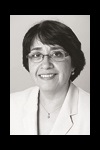At the 2013 International Congress on Lyme Borreliosis and other Tick-borne Diseases, the Centers for Disease Control and Prevention (CDC) released study results suggesting that Lyme disease in the United States occurs at a rate 10 times greater than previously reported. While peer-reviewed reports of these claims have yet to be published, the news was taken as vindication for some organizations which assert that Lyme disease is vastly under-recognized and under-reported. A major point of contention is the adequacy of current laboratory tests for Lyme disease. While many activists claim insensitivity of serologic tests, medical professionals, including laboratorians, are concerned about over-diagnosis and over-treatment based on an excessive number of false-positive tests for Borrelia burgdorferi antibodies, the main laboratory diagnostic test for Lyme disease.
To better understand these issues, it is important to examine how serologic tests for Lyme disease were developed and how early shortcomings continue to hamper laboratory diagnosis today. B. burgdorferi has a complex antigenic composition. Many of its immunogens are also expressed by other bacteria, and important antigens expressed in vivoare absent on cultured organisms used as antigen sources for serological assays.
A common complaint about Lyme disease serologic testing is insensitivity. However, antibody detection in Lyme disease, as in most infections, depends on the duration and stage of disease before sample collection. As a result, antibodies are less often detected in localized early disease when the distinctive erythema migrans skin rash is detectable. It is more common to detect serologic reactions in patients with early disseminated disease such as meningitis, carditis, or arthritis, but these can take weeks or months to develop.
Historically, the sensitivity and specificity of serological assays for Lyme disease were low. In response, CDC and other agencies convened a workshop in 1994 from which a two-tier algorithm was developed. This two-tier algorithm uses a sensitive first step to detect IgG and IgM antibodies followed by a second “specific” immunoblot step for first step-reactive samples. Although two-tier testing brought some standardization and increased specificity, it has limitations. These largely relate to subjective immunoblot interpretations leading to false-positive results and decreased sensitivity in early disease when insufficient antibody is present to react with all requisite antigen bands. In addition, problems with serology to support a Lyme disease diagnosis can be attributed to at least four other factors.
Problem Points
One problem is the use of in vitro culture-adapted strains lacking important immunodominant antigens now known to improve test accuracy. Fortunately, antigen preparations from low-passaged organisms are now used frequently. Labs also have a tendency to over-read immunoblot bands, which lead to false-positive interpretations, particularly in IgM immunoblots. Another issue is the use of Lyme disease serologic tests in populations where the pre-test probability is very low, such as those with only fatigue or subjective complaint. This results in poor post-test probability. Finally, the interval for antibody development and duration varies among individuals, precluding its use to detect active infection or to demonstrate therapeutic responses.
Opportunities for Improvement
Based on our experiences, we offer several suggestions to laboratories for obtaining robust Lyme disease test results. First, we recommend using two-tier algorithm-validated assays as recommended by CDC and the Association of State and Territorial Public Health Laboratory Directors, in which IgM immunoblot criteria are applied only during the first month of early disease and IgG immunoblot criteria provide greater weight at any disease stage. Second, recognize that first and second algorithm tiers are not independent, but supplemental; thus, immunoblots alone should not be used without a first step assay. Third, we recommend using weak controls for scoring immunoblots to optimize sensitivity. In labs that don’t have considerable experience, we recommend avoiding visual immunoblot interpretations—densitometry can make band scoring objective. Finally, we caution that technical aspects of the current two-tier algorithm are not amenable to high-throughput testing in modern core laboratories; thus, these are best run where interpretive expertise is present.
What is the future of Lyme disease testing given concerns and restrictions imposed by old technologies, increased testing volume, and the need for improved test accuracy? In our view, the field needs new approaches employing immunodominant antigens selected by evidence-based research and a focus on results that produce objective differentiation of negatives and positives. These will be available in the not-too-distant future since conserved immunodominant antigens are increasingly studied in molecular and genomic analyses of B. burgdorferi and related species. While these studies thus far have revealed B. burgdorferiantigenic complexity, they also provide broad opportunities to develop assays that include relevant antigens and epitopes proven to be expressed during early and late disease and which are objective and amenable to high-throughput testing. While the serodiagnosis of Lyme disease has significant room and promise for improvement, other diagnostic approaches that do not involve antibody detection are also being investigated, including advanced culture methods coupled with nucleic acid detection, deep sequencing, and “-omic” biomarker research. In time, an appropriate battery—or perhaps even a single test—could discern Lyme disease from its many mimics and provide accurate information useful for timely treatment.

J. Stephen Dumler, MD, is a professor of pathology and microbiology and immunology at the University of Maryland School of Medicine in Baltimore.

Maria E. Aguero-Rosenfeld, MD, is a professor of pathology at the New York University School of Medicine, associate director of clinical laboratories and director of microbiology at NYU Langone Medical Center, and director of microbiology at Bellevue Hospital Center in New York City.